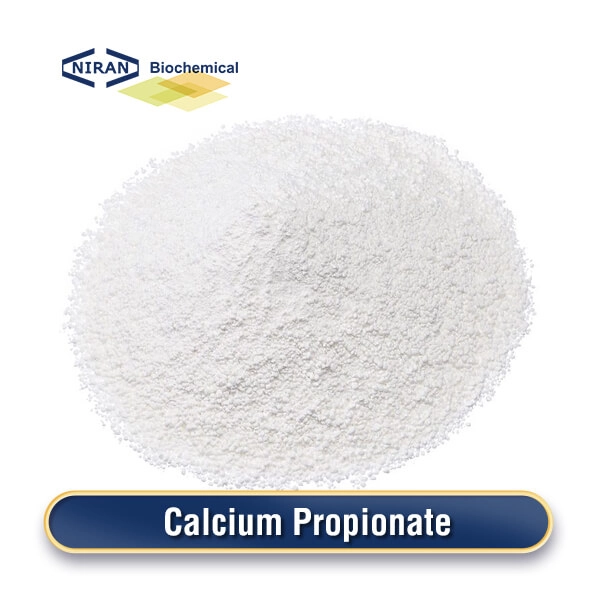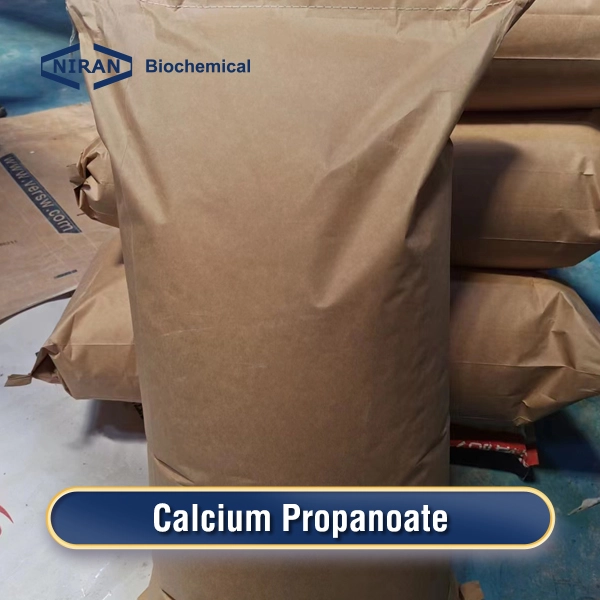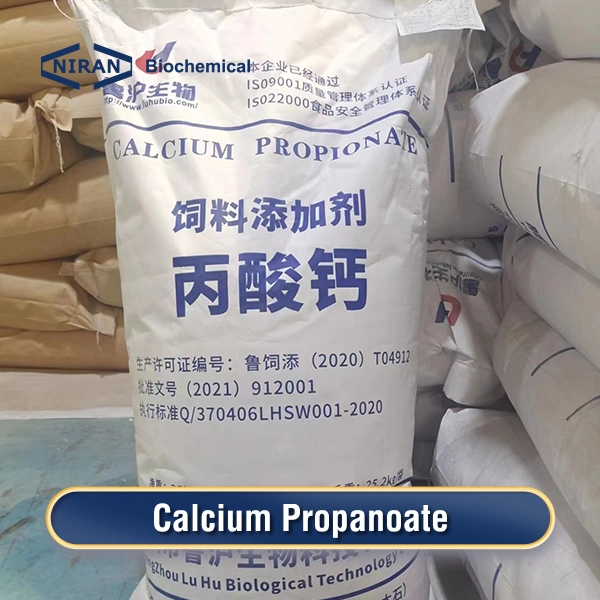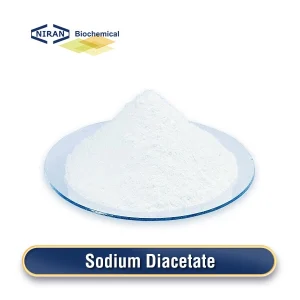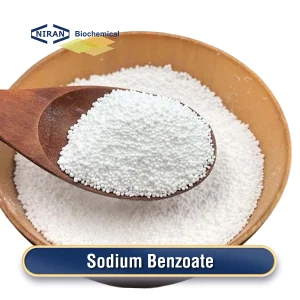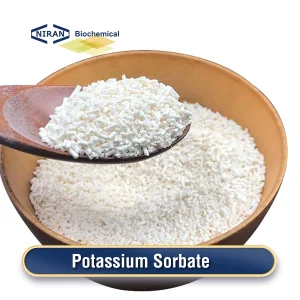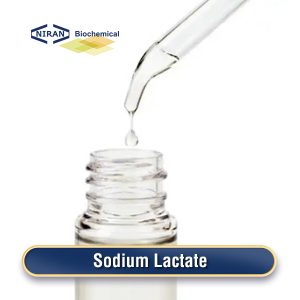What is Calcium Propionate?
Calcium propionate appears as white crystalline particles or powder with a faint distinctive odor, readily absorbing moisture in humid conditions. It exhibits broad-spectrum antibacterial properties against molds, yeasts, and bacteria, making it suitable for use as a preservative in bread and pastries. Its preservative efficacy increases with decreasing pH levels. Calcium propionate is deemed almost non-toxic to humans and can be utilized as a preservative in cosmetics, with a maximum allowable concentration of 2% (in terms of propionic acid).
In industry, calcium hydroxide is usually used as a raw material, propionic acid is added, and the temperature is maintained at 70-100℃, and the reaction is reacted for 2-3 hours. The pH value at the end of the reaction is controlled at 7-8, and finally, the reaction material is filtered and dried to obtain the finished product.
Related parameters:
| Specification | GB 25548-2010 | FCC V |
| Content (calcium propionate) w/% ≥ | 99.0 | 98-100.5 |
| PH value(50g/L,25℃) | — | 7.5-10.5 |
| Water Insoluble substances w/% ≤ | 0.3 | 0.2 |
| Loss on Drying, w/% ≤ | 9.5 | 5.0 |
| Fluoride(F),mg/kg ≤ | 30 | 30 |
| Heavy melt (Pb),mg/kg ≤ | 10 | 2 |
| Arsenic (As), w/% ≤ | 3 | — |
| Magnesium (MgO),mg/kg ≤ | — | Pass Test |
| Iron(Fe),mg/kg ≤ | 50 | — |
| Free acid or free base experiments | Pass Test | — |
Recommended dosage
| Food name | Maximum usage(g/kg) |
| Baked goods | 0.1 – 0.5 g/kg |
| Beverages | 0.1 – 0.3 g/kg |
| Cheese | 1 – 3 g/kg |
| Sausages | 1 – 2 g/kg |
| Deli meats | 0.5 – 1 g/kg |
| Chocolates | 0.1 – 0.5 g/kg |
| Candy | Candies |
| Potato chips | Potato chips |
| Crackers | 0.1 – 0.3 g/kg |
Calcium Propionate has a wide range of uses
1. Calcium propionate serves as an effective anti-mildew agent in food and feed, doubling as a preservative for bread and pastries. It seamlessly blends with flour, ensuring even distribution. Beyond its role in preservation, it also enriches food with essential calcium, bolstering its nutritional value for consumers.
2. Calcium propionate inhibits mold and aerobic Bacillus, which cause sticky substances in bread, but it does not inhibit yeast.
3. It effectively combats mold, aerobic spore-producing bacteria, Gram-negative bacteria, aflatoxins, and other contaminants in starch-rich, protein-rich, and oily substances, showcasing distinctive anti-mildew and preservative qualities.
4. It is a novel, safe, efficient, and broad-spectrum mold inhibitor for food and feed, applicable in food processing, brewing, feed production, and Chinese medicine preparations.
5. As a feed additive, calcium propionate effectively inhibits mold growth in feed and extends its shelf life. When combined with other inorganic salts, it can increase livestock appetite and boost milk production in dairy cows. Calcium propionate’s low volatility, high resistance to temperature, and excellent adaptability to animals make it well-suited for use in various types of feed.
6. Calcium propionate can also be utilized as an additive in toothpaste and cosmetics, effectively serving as a preservative
User asked the question:
Q: How do you use calcium propionate correctly?
A: When using calcium propionate, it should be accurately proportioned according to the needs of the specific product and regulatory requirements to ensure that the expected antiseptic effect and safety standards are achieved. Product formulation and pH control during processing are also important factors affecting the use effect.
Q: How to effectively store calcium propionate?
A: The product should be stored in a cool, dry, well-ventilated place, avoiding direct sunlight and moisture. The storage container should be well sealed to avoid contamination by air, dust, and odor. Remember to wash your hands when using it, and use a clean spoon to take out an appropriate amount of calcium propionate to avoid direct contact with your hands.

